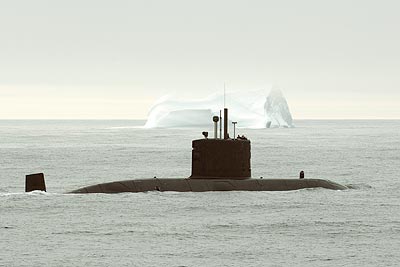
Who said geopolitics is dead? Ninety-four years on from the October 1917 revolution if anyone had any lingering illusions that Russia is a democracy they were surely dispelled by the 24 September announcement that President Medvedev and Prime Minister Putin would simply swap jobs in 2012. Moscow likes to call Russia a ‘managed democracy’. In fact Russia is a micro-democracy of two…and even that is suspect.
President ‘elect’ again Putin will thus be in power until 2024…at least. Moscow also announced recently an increase in defence spending of some $66 billion over three years, which amounts to some 3% of the Russia’s gross domestic product. With the economy slowing, entrepreneurial activity being squeezed by an increasingly rapacious Kremlin and civil society all but moribund the Putin regime is beginning to look very much like the Brezhnev regime of Soviet old. Then, a self-serving regime sought to offset its lack of legitimacy at home by causing trouble in Russia’s self-designated ‘near abroad’.
The obvious flashpoint will be the Baltic States, the security of which must remain an absolute priority for NATO and the EU. Ukraine is also a worry. However, it is the mineral rich High North of Europe where an increasingly assertive Russia could perhaps play its most aggressive card.
Prime Minister Putin has repeatedly said that Russia intends to defend her strategic Arctic resources with military might. On 28 June the Russians conducted the third test-firing of the new Bulava submarine-launched ballistic missile in the Barents Sea. In July Foreign Minister Ivanov indicated that Moscow intended to extend her territorial borders in the Arctic by some 2 million square kilometres and that Russia intended to keep two brigades of troops at high readiness in the far north, rather than one. In August Russian Defence Minister Bulgarkov announced the decision to acquire 120 more of the highly-capable Iskander M nuclear missiles and that the first battalion had been deployed to the Northern Military District near St Petersburg. With a range in excess of up to 500 kilometres this deployment potentially threatens much of eastern and northern Europe.
Furthermore, the Norwegians are reporting a marked increase in sorties by Russian strategic bombers along the Norwegian coast with simulated attacks now a regular occurrence. On 7 July as the Russian and Norwegian foreign ministers exchanged ratification documents for the delimitation treaty on oil exploration and exploitation in the Barents Sea a Russian strategic bomber formation flew down the Norwegian coast. Nor are the Norwegians alone. Britain has noted a marked increase in Russian air and naval operations against British air and sea space.
Why does Russia do this? Much of this is traditional Russian bluster that anyone working on Russian strategy has come to know well. Some of it is Moscow’s frustration with a lack of progress on co-operation with the Alliance over missile defence and concerns about NATO’s intervention in Libya – Europe’s ‘near abroad’. Russia sees the West as two-faced. However, strategic opportunism is also a factor. Moscow’s strategy must thus be seen as a truism most Europeans seems to have forgotten; when one lacks power to make the rules strategic influence is not solely a function of being ‘nice’.
Fortunately for the West Russia is a clumsy exponent of the geopolitical art and too often permits frustration and the power parochial to trump strategy. In effect, it is déjà vu all over again. Declining oil and gas revenues, a hole in Russian Government finances and increasing defence budgets simply did not add up to a sustainable grand strategy – then or now. However, the impulse to play Strong Russia is ever-present.
A stable relationship between Russia and the West is clearly in Moscow’s geo-political interest. One only has to look at a map to see the challenges Russia faces to its south and east. However, two things prevent that. First, whilst the 2010 NATO Strategic Concept hinted at better relations with Russia uncertainty, irresolution and retreat has made the West an uncertain partners/adversary. Second, the small Kremlin cabal that holds power have very parochial political and strategic agendas that by and large contradict financial and economic reality. Taken together the drivers of Russia’s strategy in the High North become clear.
Sooner or later there will be a domestic crisis in Russia. The Baltics and the Ukraine are too sensitive for overt adventurism but not the High North. Indeed, in spite of extant treaties boundaries and borders are sufficiently fuzzy for Moscow to exploit if it feels the need to send a message to the West without necessarily provoking a direct confrontation. It is as ever a high-risk strategy.
In the iconic film High Noon local sheriff Will Kane (Gary Cooper) finds himself alone against a ruthless gang of outlaws. The little man standing firm against the bully eventually wins the day when the local citizenry finally realise that his fight is their fight. Think Finland, Norway, Sweden…and Russia.
High Noon in the High North? It could be coming soon to a screen near you.
Julian Lindley-French is Eisenhower Professor of Defence Strategy at the Netherlands Defence Academy, Fellow of Respublica in London, Associate Fellow of the Austrian Institute for European and Security Studies and a member of the Strategic Advisory Group of the Atlantic Council. He is also a member of the Academic Advisory Board of the NATO Defence College in Rome. This essay first appeared on his personal blog, Lindley-French’s Blog Blast.
Image: canada%202%208%2011%20High%20North.jpg

